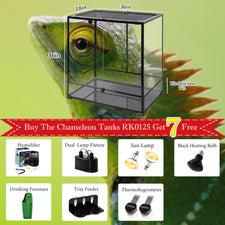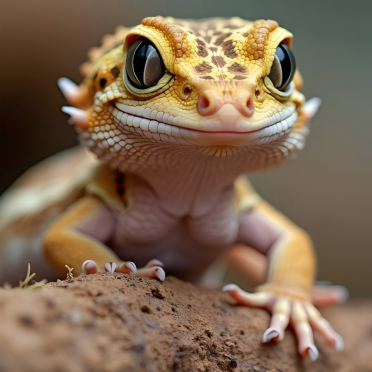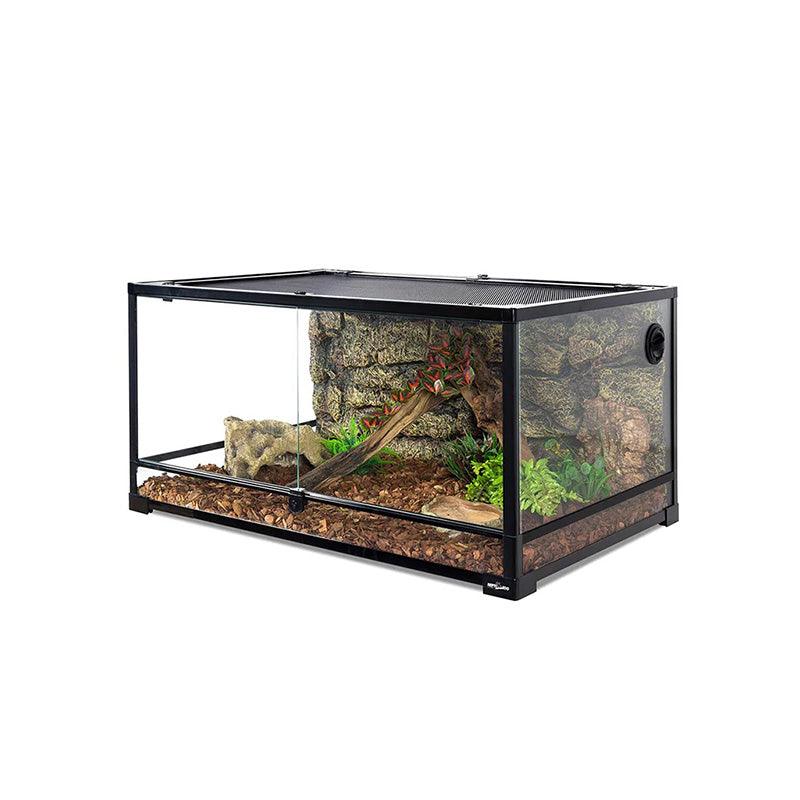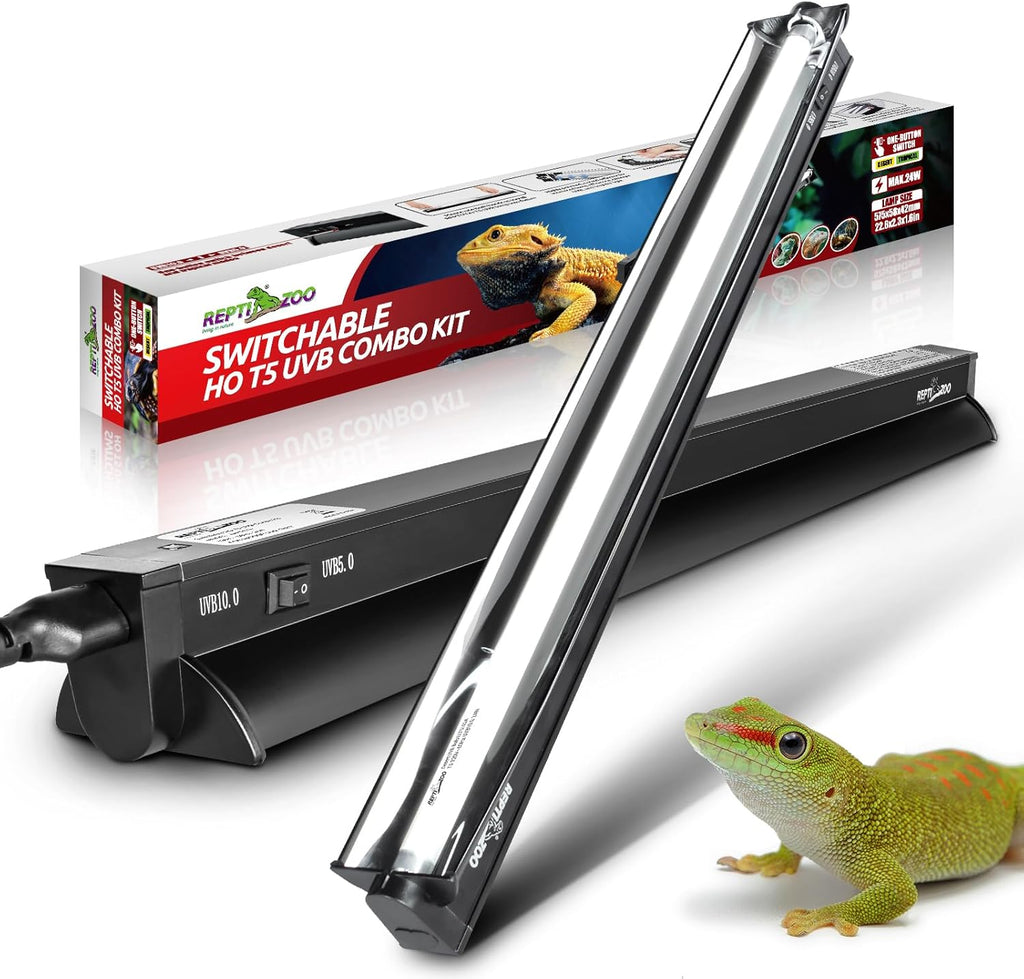Bearded dragons are one of the best reptile pets and raising a newborn bearded dragon is not as hard as it sounds. The basic thing that you should know is that as long as you meet their basic requirements they will grow as healthy pets. You can do this by planning everything and learning about how to take care of newborn baby lizards this way they will enjoy stress stress-free life and you will have a healthy bearded dragon. Here in this blog, we will help you learn the care requirements for baby lizards.
Getting The Right Baby Lizards
It’s easy to get a baby lizards but you should keep a few things in mind especially if you don’t have any previous experience of raising reptile pets. The first step is always to select the healthy dragon and you can do this by getting one from a reputable breeder. You can find many online who keep the proper medical records of their pets and also ask for the history of parents.
When selecting the baby lizards always look for one that is active, usually healthy baby dragons move a lot and are full of energy. If you select the healthy baby the basic step is done. The next step transporting them to your home make sure you have all the essential things in your home for rearing a dragon.
Necessary Equipment for Newborn Lizards
· Right Size vivarium
· Heating bulb
· Heating lamp
· Infrared thermometer
· Plants
· UVB bulbs
· Logs, branches, and rocks
· Water and food dishes
How to select the right size Vivarium for a Newborn Lizards ?
Selecting the right Size reptile tank is very important the tank can range from 20 to 120 gallons but the expert believes that selecting the 120 gallons is the right choice. This helps newborn bearded dragons to easily adjust to the enclosure and also aids in moving them to the adult tank. In a large enclosure, it will be easier for your baby lizards to regulate its body temperature. In smaller enclosures sometimes it is really difficult for them to run away from high-temperature areas. Similarly, the enclosure should be easy to operate, the one with the front opening is easy to access and has better ventilation. Don’t buy those tanks that have a solid top, then mesh works perfectly.
Substrate
Newborn baby lizards learn about their surroundings by licking everything so it's important to choose the substrate carefully. At the start, you can see the reptile carpet, play sand, or paper. In the case of sand always remove any large pebbles this is because baby dragons can eat these pebbles and it results in the blockage of the intestine and ultimately death.
The best thing to do is to keep the cage simple for the first 3 to 4 months. There must be no hiding spots in the enclosure where they can burrow. Try not to add extra decorative items in the cage so crickets won’t get any place to hide. Never add any kind of green leaves in the first months because your baby lizards will try to eat them.
Once your baby lizards grow a bit and start to eat from their feeder and know about the surroundings you can use the loose substrate and different decorative materials.
Decoration
The main focus when you are decorating the baby lizards enclosure is safety, comfort, and stimulation that looks like their natural habitat. Start with a solid substrate as discussed above to prevent impaction. You can also place a small shallow water dish it's not only accessible but there is no risk of drowning.
Adding a basking platform in the tank is also very important, you can use flat rocks or tree branches under the heat lamp for temperature regulation. Similarly, there must be a hiding spot in the cooler side of the enclosure where your baby lizards can hide and feel secure.
Placing elements like logs or branches will present a look at the natural environment and encourage them to move around. If you want to add greenery you can use artificial plants as they are safe, live plants that are nontoxic can also be added as this will increase their visual interest and also provide them a sense of security. When you are adding plants take good care as there are chances of mold and pests. The last thing to make sure of is that all decorations must be easy to clean so the whole environment stays hygienic for baby dragons.
Lighting and temperature
When setting the bearded dragon enclosure it means that you will have to place some UVB lights. These lights should be added on the top of the enclosure. Use a 40 to 60-watt bulb on one end of the rock adjust the height of the rock and change the bulb wattage to get a temperature of 105 to 110 F during the day time. Baby lizards need to stay warm to digest their food properly.
Basking is the natural way for bearded dragons to get the heat. The light bulbs not only provide heat to them but also keep the rocks warm; these rocks provide heat for their belly which helps them in digestion. The temperature in the cooler side of the enclosure should stay around 80-85 degrees. This temperature difference will help in creating a suitable environment and also help in the regulation of body temperature. At nighttime, it's normal that the temperature drops to 60F and its normal. Make a routine to give your lizards a day of rest that involves no heat, no lights, or food for a day.
It is also essential to keep the temperature in check and for it you can use an infrared thermometer. If you want to passively check the basking temperature a digital probe thermometer can help but for this probe should be placed on the basking surface.
If you want proper growth of your newborn bearded dragon, keep the lights on for almost 12 to 14 hours. The location of the UVB bulb is also important it should be placed 6 to 10 inches above the basking area so the light gets absorbed and helps in manufacturing of the vitamin D3 for the formation of bone. If the UVB bulbs are too far the light will dissipate before it reaches the dragon.
Humidity
The optimum humidity necessary for the bearded dragons should be around 30% to 60% and it should be measured on the digital hygrometer and it should be checked by placing the probe on the cool side of the enclosure. If the humidity stays more than 60% for too long it will make your bearded dragon sick.
Food
Newborn beardies love to eat small to medium crickets, but if the crickets are too small and are not easy to catch they won’t be interested in them. The best way is to provide them crickets as much as they can eat in 10 minutes and feed them three times in the first three months of their life. While feeding keep one thing in mind to not feed them anything bigger than the space between their eyes.
Don’t feed mealworms to young babies as they are not healthy and very hard to digest. You can feed them locusts but they are expensive. If there are any uneaten crickets left in the tank remove them, otherwise they will nibble the baby lizards when they are asleep.
Fresh vegetables should be fed every day, kale is one of the favorites of beardies. All the vegetables should be chopped into small pieces so the baby lizards won't choke on them. Finely chopped apples and grated carrots can also be fed as they are a great option. Don’t feed tomatoes, iceberg lettuce, and cucumber as they are not nutritious and pass directly through the digestive system. Causing running feces.
Water
Newborn bearded dragons don’t recognize standing water so always place shallow trays of water, but to make sure they are getting moisture spray their food with calcium water. If you feel that your baby lizards is unhappy and their skin is sunken then it means they are not getting enough water. Baby lizards at a young age are unable to identify the water so make sure they are drinking properly or spray the enclosure or plants so they can see water dripping. However, make sure not to spray too much otherwise it will increase humidity.
Some people like to put things like waterfalls in the bearded dragon tank but it's not recommended. Their lungs are not made to handle the increase in humidity. Similarly do not bathe your bearded dragons unless they are dirty, constipated, or after lying eggs. If you bathe them regularly it will damage their lungs. Most people think that as a bearded dragon can swim we can bathe them regularly but it's not the case. All the animals have a built-in instinct of swimming but it doesn’t mean that you can put them in water now and then.

Supplements
When feeding your bearded dragon always add calcium dust to their food, on the other hand, multivitamins, vitamin d3 can be given after a few feedings. One thing to keep in mind is that both underfeeding and overfeeding supplementation are not good for the bearded dragons. Proper supplementation is necessary for all the growing dragons. A diet lacking supplements will cause devastating effects on the young dragons.
The easiest way to supplement their food is by placing the insects in the container and coating it with the supplement powder. You can also sprinkle supplements on the salads, to avoid over-supplementation make sure that every third or fourth feeding doesn’t have any supplements. If you are giving proper UVB light bearded dragons might not need D3 in each feeding.
Handling
Baby beardies are very active and more likely to run than adults. You can start the handling by sitting with the dragon on the ground or by handling them when they are inside the enclosure, so if they try to run they won’t fall. Other tips to keep in mind are:
· Always come from the front when handling your beardie, as they can detect the shadows coming from the back of their heads. If you are coming from the back side, their first instinct is to run away from the scene and hide.
· When handling provide support to all four feet so they don’t feel unbalanced, otherwise they will keep moving.
· If your bearded dragon is shedding don’t pill their loose skin, because you can pull off skin that is not not detached yet.
· When bearded dragons move use slow movement of hands to control their movement.
· Always keep the handling sessions short and try not to stress your baby lizards. Make sure that the sessions are only 5 to 10 minutes as they get used to handling.
Pro Tips
When you receive your bearded dragons it is often seen that they will not eat immediately as they reach a new place. The stress of a new place and transportation may put them under stress for the first few days. Give your baby lizards three to four hours to adjust to the new place and then provide him with a few crickets and some green vegetables in a lid. Don’t hand feed them in the start for a few weeks until they completely adjust to the environment.
In case your baby dragon doesn’t eat cricket for the whole day remove the feeding tray and provide them water. The next day, wait until the middle of the day and feed them again not feeding for a day and a half may help them and they would start eating. To minimize the stress the front and side of the enclosure with paper and if your baby dragon won't eat for more than two days consult your vet.
Conclusion
It is a wonderful experience to raise a baby bearded dragon, and it requires dedication, proper care, and attention. From establishing a safe environment to giving them proper nutrition and the proper temperature, every aspect contributes towards their general growth and development. If you have proper patience and proper care, your baby dragon will thrive and become attached to you dearly. Start on the right note, and you can enjoy years of friendship with this amazing reptile pet.











